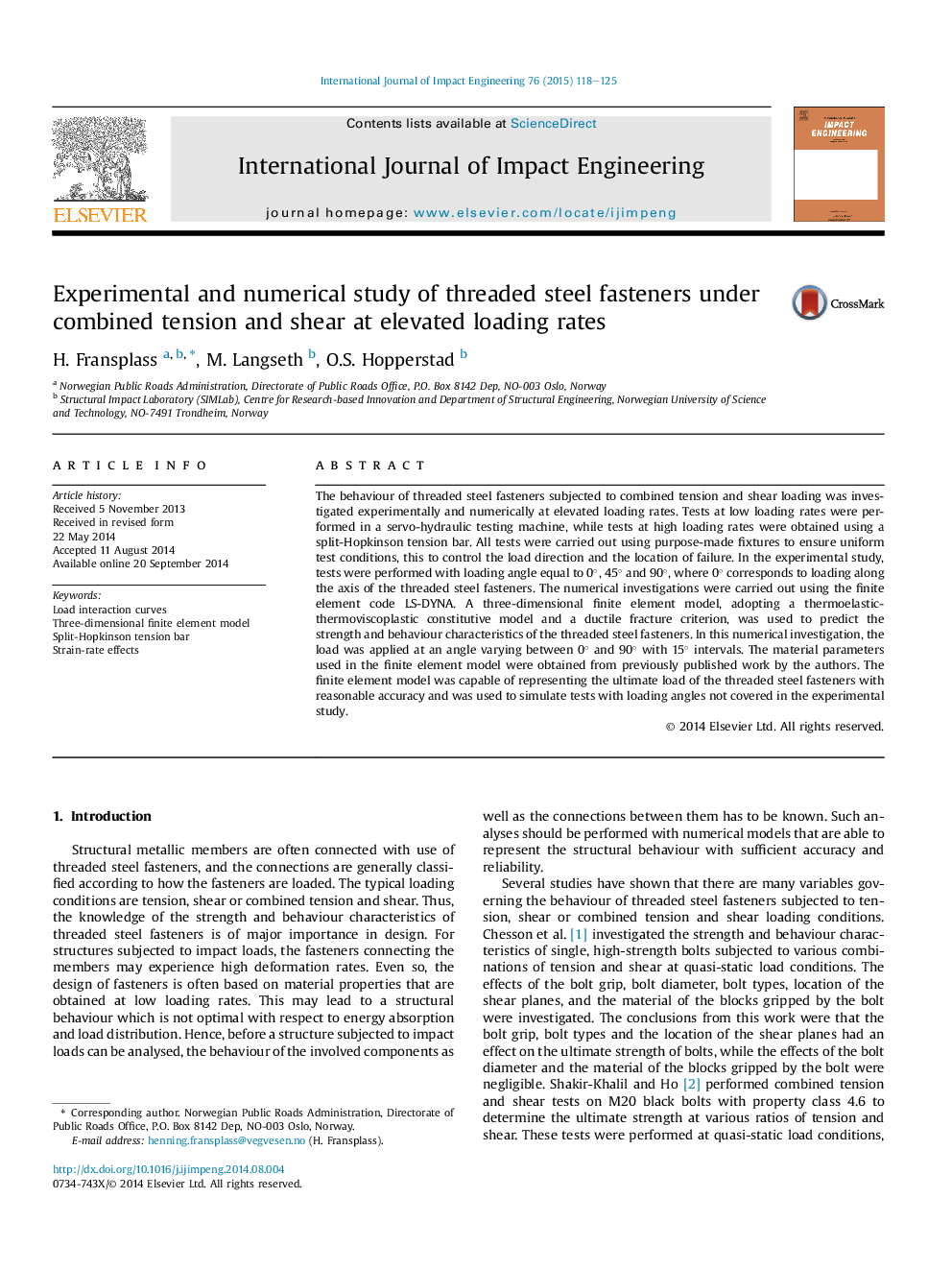| Article ID | Journal | Published Year | Pages | File Type |
|---|---|---|---|---|
| 776459 | International Journal of Impact Engineering | 2015 | 8 Pages |
•The ultimate load increased with an increasing deformation rate for all load cases.•The ultimate load from simulations and experiments showed a maximum deviation of 11%.•Interaction curves for the ultimate load at elevated rates of strain were established.
The behaviour of threaded steel fasteners subjected to combined tension and shear loading was investigated experimentally and numerically at elevated loading rates. Tests at low loading rates were performed in a servo-hydraulic testing machine, while tests at high loading rates were obtained using a split-Hopkinson tension bar. All tests were carried out using purpose-made fixtures to ensure uniform test conditions, this to control the load direction and the location of failure. In the experimental study, tests were performed with loading angle equal to 0°, 45° and 90°, where 0° corresponds to loading along the axis of the threaded steel fasteners. The numerical investigations were carried out using the finite element code LS-DYNA. A three-dimensional finite element model, adopting a thermoelastic-thermoviscoplastic constitutive model and a ductile fracture criterion, was used to predict the strength and behaviour characteristics of the threaded steel fasteners. In this numerical investigation, the load was applied at an angle varying between 0° and 90° with 15° intervals. The material parameters used in the finite element model were obtained from previously published work by the authors. The finite element model was capable of representing the ultimate load of the threaded steel fasteners with reasonable accuracy and was used to simulate tests with loading angles not covered in the experimental study.
